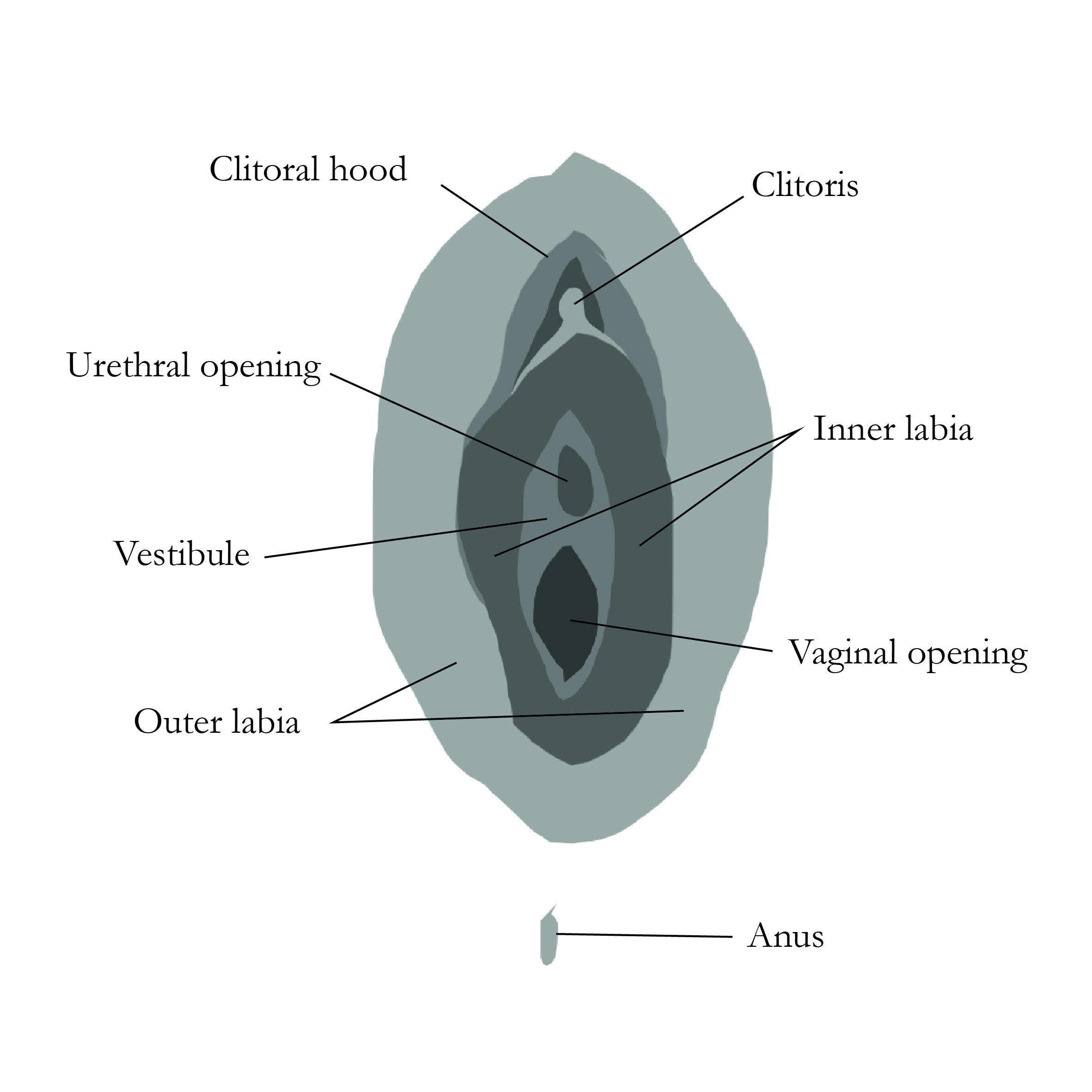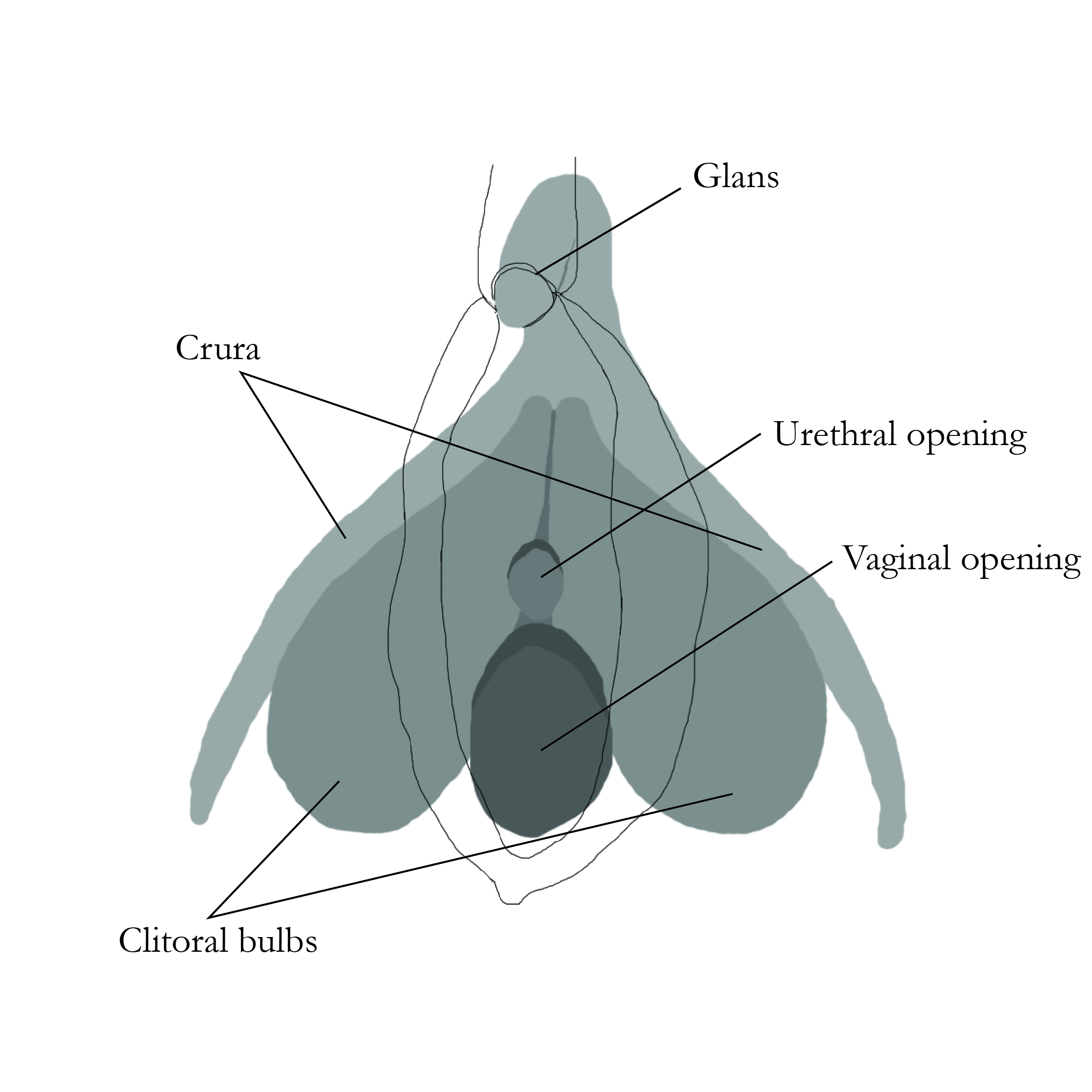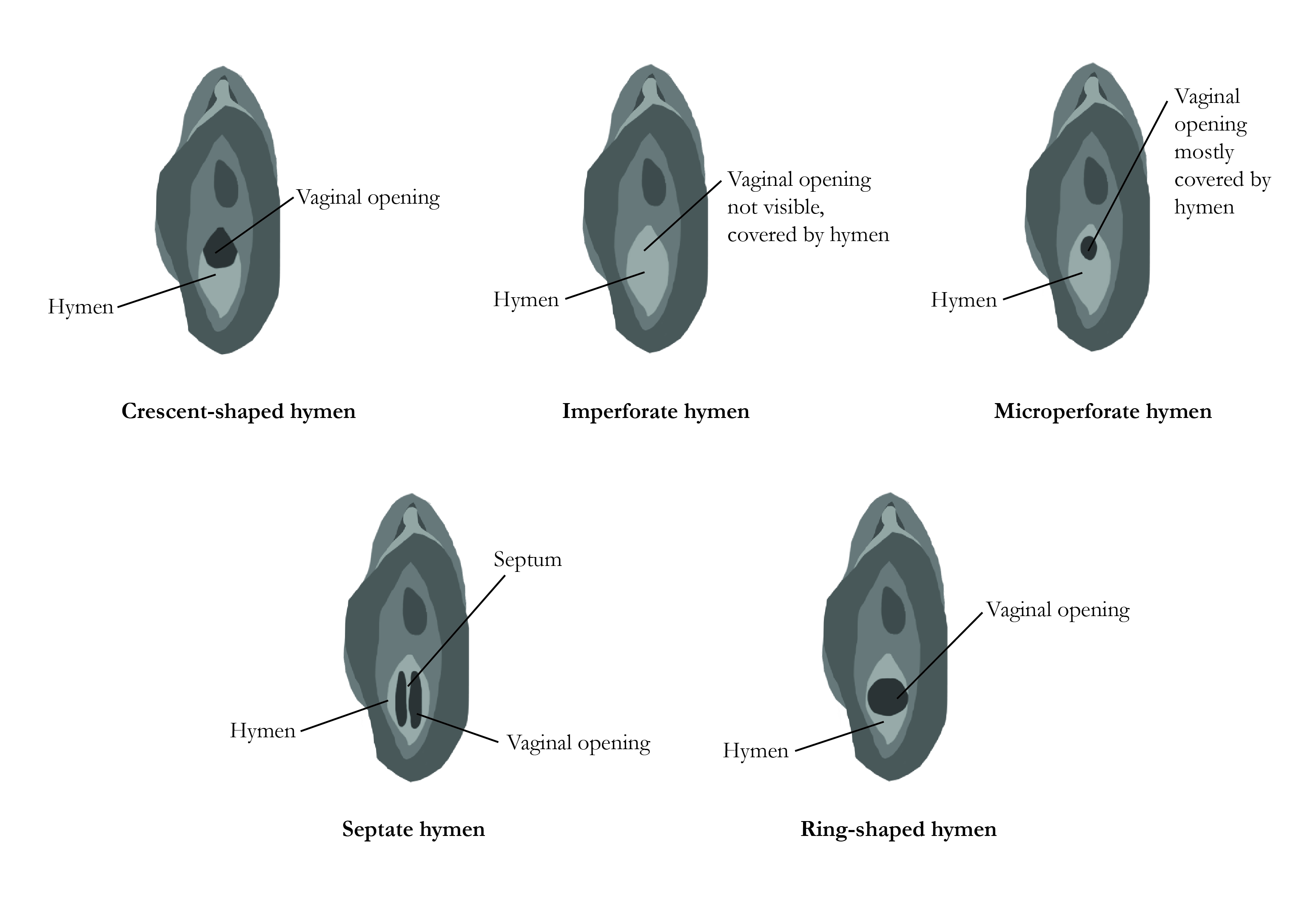What does a normal vagina look like? A no-nonsense guide to vaginas and vulvas
With the help of an expert, we're opening up the conversation about intimate health

What makes a normal vagina, or vulva for that matter, has been a topic of discussion for decades. Even though a huge proportion of the world's population has one, conversations about vaginas are often confined to doctors' offices and discreet groups of friends.
If you see a vagina or vulva that doesn't look like your own, or you feel that yours has changed in appearance recently, it may be concerning and you may start to wonder if your vagina is still normal. The good news is, even if it's changed or looks different to another one, is probably completely fine.
While the world has changed so much in the way we speak about intimate subjects, conversations around vaginal health - including topics like vaginal dryness and other vaginal discomfort issues - are still held in private. It's important to start demystifying our genitals for everyone's sake and have open and honest conversations about vaginal health with ourselves, our doctors, our friends, and partners.
What is a normal vagina?
First thing's first, there's no such thing as a normal vagina - or vulva for that matter. Much like every other part of the human body, everyone's genitalia looks different.
In general though, Ashfaq Khan, consultant gynaecologist at Harley Street Gynaecology says, "Both vagina and vulva should feel soft as vaginal skin is usually well moisterized. There shouldn't be any abnormal discoloration."
What's the difference between a vulva and vagina? "If you're wondering whether you have a normal vagina, you're probably thinking about the vulva, which is the correct name for the external genitalia," says Lynn Enright, author of Vagina: A Re-Education. "This includes the pubic mound, the inner and outer labia, clitoris, urethral opening and the vaginal opening."
Whereas, "our vagina is inside our bodies and it's the muscular tube that leads from the vulva to the uterus."
Sign up for the woman&home newsletter
Sign up to our free daily email for the latest royal and entertainment news, interesting opinion, expert advice on styling and beauty trends, and no-nonsense guides to the health and wellness questions you want answered.
This confusion is very common, though, she says, despite efforts in the body and sex positivity movement to educate. "We're not comfortable with the word 'vulva'. It's not a word we hear very often and its lack of popular usage definitely relates to society's struggle to address female sexuality on the whole."
We instead use the word 'vagina', even though it's technically incorrect. "It's still such a taboo to say 'vulva' as we don't like to talk about female genitalia except in relation to male sexuality," Enright says. "The vagina is something that a penis can go into, and a baby can come out of, so we've become more comfortable with that word."

Diagram of the vulva, courtesy of Vagina: A re-education
What does a normal vulva look like?
Whether you're referring to the vulva or the vagina, everyone's looks different. "There is actually a great variation," Enright reveals, "The range of what vulvas look like is similar to what faces look like. Everyone looks slightly different. But we're just not told that. It's perfectly normal for your vulva to look different and there is a variation from woman to woman."
In fact, a 2019 project by photographer Laura Dodsworth for the BBC highlighted just how different vulvas are from woman to woman. The project showcased photos of 100 vulvas to show the range of 'normal' among women.
Aside from the advice offered by gynaecologist Dr Ashfaq Khan, there are some other things you should expect to see when looking at your vulva.

Diagram of the clitoris and surrounding vulva, courtesy of Vagina: A Re-education
The anatomy of a vulva
- Labia - folds of skin around the vaginal opening. The inner labia can be longer or bigger than the outer labia and vice versa. They can also be slightly different in color, and the color can change as you get older. The inner labia can also look different after childbirth.
- Clitoris - located at the top of the vulva where the inner lips come together. The tip of the clitoris is visible, but it extends inside your body. It has thousands of little nerve endings that become swollen when you're aroused (exactly like a penis). It's there for pleasure purposes only, and it can range in size. Some women have a clitoris the size of a pea, while others are larger - both are normal.
- Urethral opening - located just below the clitoris is the urethral opening when urine comes out.
- Vaginal opening - below the urethral opening you'll find the vaginal opening. This is where childbirth occurs, where menstrual blood leaves the body and where a penis, one of the best sex toys, or fingers are inserted. The hymen is located near the vaginal opening, it comes in a variety of shapes and many people believe that it 'breaks' after a woman has sex for the first time. This is entirely untrue and there's a range of evidence, including a report by Georgetown University School of Medicine, that suggests the hymen can still be visible after sex and even childbirth.

Diagram of the hymen, courtesy of Vagina: A re-education
- A difference in color - the skin of the vulva can sometimes be a different color from the skin on the rest of your body.
- Hair variations - some people will have more hair in the vulva area than others.
Does the menopause affect the vulva?
Yes, you may notice that your vulva looks different when you start to experience menopause symptoms. "Skin becomes thin due to lack of estrogen, as a result, the vulva can become sensitive, shrink and wrinkle. The vagina can also bleed easily during intercourse, causing pain during sex. In general, the skin can become sore, sometimes painful," Dr Khan says. "There may also be some skin color changes with pigmented spots on the vulva."
This happens because of the reduction in estrogen production, Enright explains. "Estrogen is quite essential for our skin and the tissues over our body," she says. "You make less estrogen when you're older, which means your skin becomes dryer all over."
It doesn't just affect the vulva and vagina, however. Even when you first start to experience symptoms of perimenopause, you may notice changes. "The skin around the urethra becomes thinner, meaning urinary stress incontinence can happen," Enright says. "We have to realize again that our vulva is just another part of our body. Like the rest of our body, the skin around the vulva ages."
Popular menopause treatments like hormone replacement therapy (HRT) can help relieve symptoms of vaginal atrophy and urinary incontinence. If this is something you're experiencing, visit your doctor.
And of course, there are the more visible, external differences when it comes to vulvas during menopause as well. "Hair might go white, and there might be less hair there the older we get. It's a completely natural part of aging," she says.
Vagina: A re-education by Lynn Enright: $16.81 / £7.79 | Amazon
Lynn Enright is a journalist and the author of the book, Vagina: A re-education. Lynn's book dispels common myths around vaginas and what a 'normal vagina' is.
When is a vulva not 'normal'?
While everyone's vulva and vagina is different, there are some red flags to look out for when it comes to intimate health. These are the major ones, according to consultant gynaecologist Dr Ashfaq Khan:
- Vaginal or vulval skin shows whitish, reddish or brownish discoloration
- You feel or notice any lump
- A lesion that discharges blood, pus, or even clear discharge appears
- The texture of the vagina or vulva feels different, i.e. too thick or too thin
- You start to notice your vagina is sensitive, causing pain during sex
- Your vagina is itchy or sensitive
"Always visit your doctor if you are diagnosed with an HPV infection or have an abnormal cervical cancer test result, and if you notice any warts or other similar, visible infections," he adds.
Why haven't we been talking about vaginas and vulvas?
Why have vaginas been such an out-of-bounds topic for so long? Male genitalia is well documented - in TV, books, and in our culture in general. Yet female genitalia is kept much more hush-hush, leaving many women wondering what really is normal.
"Ask the average woman to draw you a vulva and she'll more than likely struggle," says Enright. "Ask her to draw you a penis, and she'll sketch you a broadly accurate, if rudimentary, representation with minutes."
Enright has a theory as to why this is. "We live in a society where straight, cisgender men have more privilege, are more dominant, and have been the ones running the medical profession for centuries. That has made a difference."
She explains, "Medical diagrams [of vulvas and vaginas] are quite neat and symmetrical. And then, in porn, vulvas are quite neat and symmetrical. I think girls can get a shock when they really look at their own vulva for the first time and realize it looks different to the ones they see in porn - even porn for women - or medicine. That happens because they're not empowered with the information in the first place."
As with all aspects surrounding our vaginas and vulvas, the main way to tackle the stigma is to talk about them. This way we can make sure that younger generations understand what is normal. "Talk about it with whoever you can feel comfortable talking about it with. It might be a medical professional, it might be a friend, it might be a feminist group. Educating ourselves and eradicating shame are two ways we can tackle the lack of information or the misinformation that has surrounded the vulva," Enright says.
Amy Hunt is an experienced digital journalist specialising in homes, interiors and hobbies. She began her career working as the features assistant at woman&home magazine, before moving over to the digital side of the brand where she eventually became the Lifestyle Editor up until January 2022. Amy won the Digital Journalist of the Year award at the AOP Awards in 2019 for her work on womanandhome.com.
-
 Celebrities who overcame scandal and came back stronger than before - from Jane Fonda to Martha Stewart
Celebrities who overcame scandal and came back stronger than before - from Jane Fonda to Martha StewartScandals, controversies and fallouts can really harm a celebrity's reputation, but these stars proved there's power in putting in the work for a second shot
By Jack Slater Published
-
 Ranvir Singh’s denim midi dress is perfect for April date nights
Ranvir Singh’s denim midi dress is perfect for April date nightsYour favourite jeans will always be an easy outfit staple but denim dresses have the same comfort factor and more elegance.
By Emma Shacklock Published


